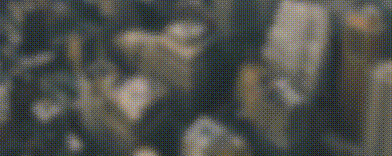
There is a kind of insect, if you are willing to re-understand and actually observe them, you will find that they are not only a cute group of insects, but also their exquisite survival wisdom and magical camouflage skills are even more breathtaking!
They are caterpillars. Resist the nausea, look down and discover their magical side.
A collective term for caterpillars, butterflies or moth larvae. They move slowly and have little attack power. When they emerge from the broken egg, the caterpillar begins their most important task – eating, eating quickly, eating in large quantities, and growing rapidly.
As a result, caterpillars become a delicacy for birds or certain predatory insects. In order to avoid predators, caterpillars have evolved a variety of camouflage and protection methods.
Imitation of the spiny moth
Some grow hairs or spines to make themselves look bad, some use pungent odors to make predators give up predation, and others use mimesis or camouflage to avoid predators' sight.
These evolutionary directions have brought the caterpillar a shape and shape peculiarity, becoming a challenge for insect observers in the field observation (not easy to find) and aesthetic fun (beyond imagination).
Loveno Jun will introduce the survival strategy of the caterpillar to you one by one!
<h1>Protective color</h1>
Protective color refers to the use of the same color as the natural environment to hide the whereabouts, in order to survive and adapt to the environment. The two major colors of green and brown are the most common colors in nature. The protective color of insects is also almost always dominated by these two types of colors.
The larvae of the small vegetable moth are the insects that are often eaten in the green vegetables↑ ↑
Green phoenix butterfly larva ↑
Blue Butterfly Larva ↑
<h1>Caution color</h1>
Some caterpillars have bright body colors or distinct markings to warn predators that they are unpalatable or poisonous. At the same time, they do have a toxic, pungent odor, or other means of attack, and vigilance is not the only way to deter predators.
The most common and effective warning colors are red, yellow, and white. These colors are highly contrasted with greenery, resistant to changes in light and shadow, high color differences, and can be seen at long distances.
Red pearl butterfly larvae feed on poisonous aristolochia bells, Photo by Love Wild Story, Copyright ↑
The larvae of the black-veined golden-spotted butterfly feed on poisonous marigolds and have a yellow-black warning color↑ in body color
Mulberry brown thorn moth root erect stinger ↑
<h1>mimicry</h1>
Some non-toxic caterpillars simulate other species of organisms through body color, behavior, etc., appear poisonous or have no edible value, thus deceiving predators.
False eye lines are a common mimesis, large false eye lines can help caterpillars simulate into snakes to intimidate predators, and small false eye lines can be used as a sacrifice point to divert the key points of attack.
↑ Larvae of the family _Hemeroplanes triptolemus_idae
↑The Dynastor darius mimesis is even more powerful, with pupae simulating snakes
The young larvae of the citrus butterfly simulate adult bird droppings, and the last larvae change their appearance, with pseudo-eye spots on the body, plus the stink glands on its head, and the chest bulges when it encounters an attack, and the stink glands are prominent, which is more like a snake.
↑ Young larvae
↑ Terminal larvae
Inchworm is a general term for the larvae of the family Ulmus, and most inchworms have superb camouflage skills, simulating various plant branches, petals, etc.
↑The curved green-winged moth uses silk to attach its leaves to its body, simulating it as a plant
↑ Citrus inchworm, do you see it?
↑ A kind of inchworm that uses the camouflage of flower petals
The larvae of the moth will take the form of a cover mimicry, collecting trees and leaves or other objects and weaving silk into a strong nest bag to hide inside.
Whether it is a protective color, a warning color, or a mimetic is a means of defense for caterpillars to prevent predators from attacking, except for the poisonous caterpillars themselves (in the wild to see the thorny and hairy caterpillars do not easily get started), most caterpillars are gentle and harmless, and can even be raised as small pets!
↑ Black Oak Yellow Poison Moth, long stingers are frightening!
Teach everyone a small method of collecting caterpillars in a family, plant a small orange tree or kumquat tree on the balcony, it will attract butterflies to lay eggs on the tree, and when the eggs hatch, you can collect and raise larvae, and then you can observe how the butterflies grow with your children!